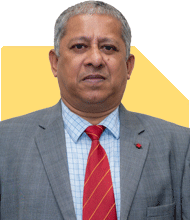Samraat Jadhav |2352 Answers |Ask -Follow
Stock Market Expert - Answered on Jun 13, 2023
He is a SEBI-registered investment and research analyst and has over 18 years of experience in managing high-end portfolios.
A management graduate from XLRI-Jamshedpur, Jadhav specialises in portfolio management, investment banking, financial planning, derivatives, equities and capital markets.... more

Sir, I am 24, starting investing with objective of building a corpus of around 1 CR in next 15 years. ( will also step up in below mentioned SIP's yearly 10-15%). 1. Parag Parikh Flexi - 2000 pm 2. Axis Small Cap - 2000 pm 3. ICICI Prudential Large & Midcap - 1000 pm OR Mirae Asset Midcap/ ICICI value discovery - 2000 pm ( Pls suggest between 2 mentioned.) Also should I include any Index fund as 4th Fund in Portfolio. ( HDFC Index S&P BSE OR Nippon ind Index s&P , pls suggest between 2) .
Considering that you will do a total SIP of Rs.10000/- per month which will be incremental at 10% every year still your objective of 1cr will not be justified considering that total returns fetched would be 15% on an average. The total corpus after 10year would be around Rs.39,57,419/-. with the same corpus you have to invest for at least 15yrs to achieve your goal which will be around Rs. 1,10,99,995/-.
Hope this helps you and you invest accordingly.
Disclaimer: Investments in securities are subject to market RISKS. Read all the related documents carefully before investing. The securities quoted are for illustration only and are not recommendatory. Registration granted by SEBI, membership of BASL and certification from NISM in no way guarantee performance of the intermediary or provide any assurance of returns to investors.
You may like to see similar questions and answers below
Omkeshwar Singh | Answer |Ask -Follow
Head, Rank MF - Answered on May 12, 2021
Omkeshwar Singh | Answer |Ask -Follow
Head, Rank MF - Answered on Sep 15, 2022
Omkeshwar Singh | Answer |Ask -Follow
Head, Rank MF - Answered on Nov 16, 2022
Ramalingam Kalirajan |9126 Answers |Ask -Follow
Mutual Funds, Financial Planning Expert - Answered on Apr 23, 2024
Ramalingam Kalirajan |9126 Answers |Ask -Follow
Mutual Funds, Financial Planning Expert - Answered on Dec 09, 2024
Prof Suvasish Mukhopadhyay |1545 Answers |Ask -Follow
Career Counsellor - Answered on Jun 23, 2025
Prof Suvasish Mukhopadhyay |1545 Answers |Ask -Follow
Career Counsellor - Answered on Jun 23, 2025
Prof Suvasish Mukhopadhyay |1545 Answers |Ask -Follow
Career Counsellor - Answered on Jun 23, 2025
Prof Suvasish Mukhopadhyay |1545 Answers |Ask -Follow
Career Counsellor - Answered on Jun 23, 2025
Prof Suvasish Mukhopadhyay |1545 Answers |Ask -Follow
Career Counsellor - Answered on Jun 23, 2025
Prof Suvasish Mukhopadhyay |1545 Answers |Ask -Follow
Career Counsellor - Answered on Jun 23, 2025
Prof Suvasish Mukhopadhyay |1545 Answers |Ask -Follow
Career Counsellor - Answered on Jun 23, 2025
Prof Suvasish Mukhopadhyay |1545 Answers |Ask -Follow
Career Counsellor - Answered on Jun 23, 2025
Prof Suvasish Mukhopadhyay |1545 Answers |Ask -Follow
Career Counsellor - Answered on Jun 23, 2025
Prof Suvasish Mukhopadhyay |1545 Answers |Ask -Follow
Career Counsellor - Answered on Jun 22, 2025






















